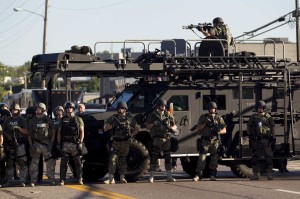
Originally published in Liberation Newspaper, July 2015
In the last year, there has emerged a nationwide movement protesting racist police murders and brutality.
In addition to such deadly incidents, there exists the daily, routine use of coercive force by armed bodies (police forces) throughout the country. New York City’s “Stop and Frisk” policy has been replicated under an assortment of names across the country, resulting in the temporary detainment of millions of mainly young Black and Latino people every year. There is also a growing wave of repression that has targeted the activists and organizers who are trying to oppose these injustices.
These are the episodes that have ignited mass anger and protests, but the movement has also called into question the legitimacy of the legal and political system as a whole. To understand and fight state violence and repression, it is imperative to first understand the state.
The state: armed bodies and coercive institutions
The police are the most obvious symbols of the state or state power. In conjunction with the police, there are judges who preside over courts, and prisons and jails that hold more than 2.3 million people in the United States. The police, the courts and the prisons constitute the essence of what Marxists describe as the modern capitalist state.
In addition to the police, courts and prisons, the other primary legal source of organized coercion and violence are the Armed Forces. The U.S. capitalist class rules over not only the working class inside this country, but over a vast global network of corporate, financial and commercial interests. The U.S. military consists of more than 2 million people under arms, housed in more than 1,000 military bases and installations around the world.
These bodies of armed men and women, the central core of every state, are “special bodies” because they have “special” authority to do what most members of society are not allowed to do: commit violence against other people, detain and imprison them, or launch military actions.
The state is not, as we are often taught, a neutral regulating agency that applies its coercive power equally against all individuals who break the rules or laws of society. …
The state is the product of irreconcilable class conflict within a social structure; it seeks to regulate society and this class conflict on behalf of the dominant ruling class.
Revolutionary socialists and communists fight for a revolution that puts poor and working people in power. That will require building an altogether new state to defend the new power and the new system from those who would like to reimpose capitalist exploitation and oppression. Ultimately, with the disappearance of class antagonisms, in a society based on genuine equality where human needs are met, the necessity for special armed bodies (the state as we know it) will disappear.
Read the full version of this article in Revolution Manifesto.






